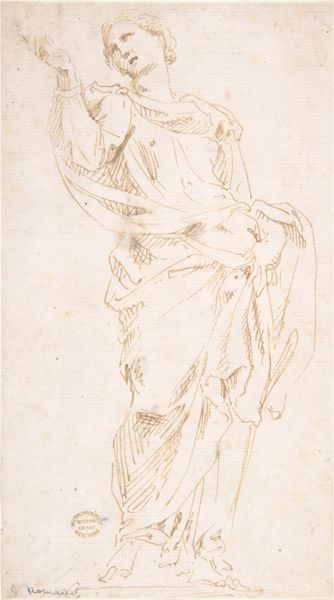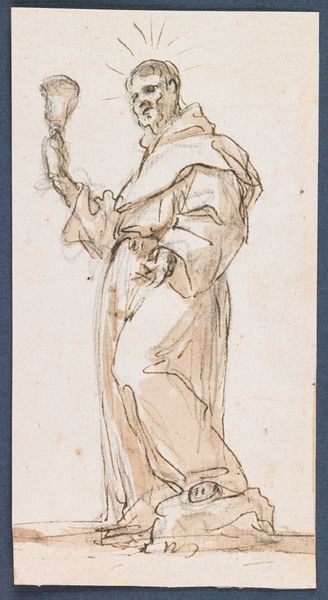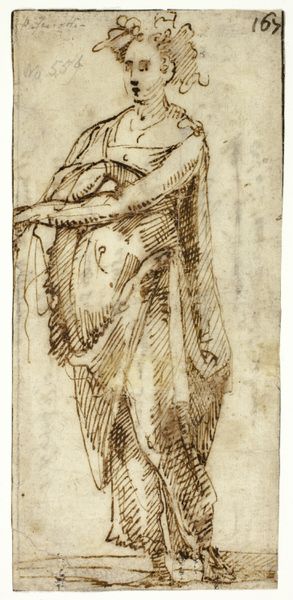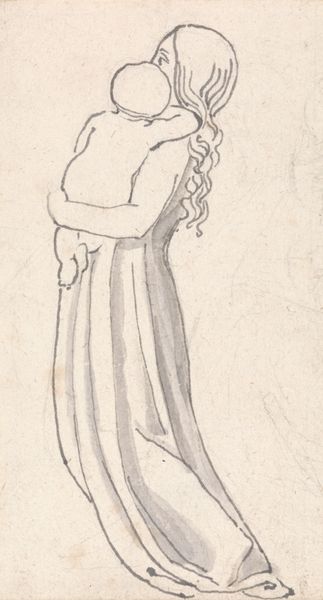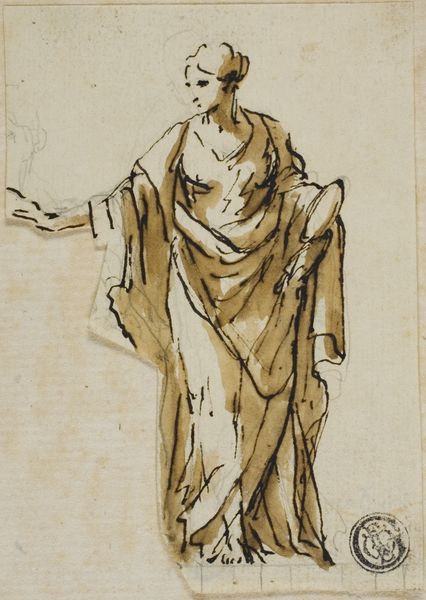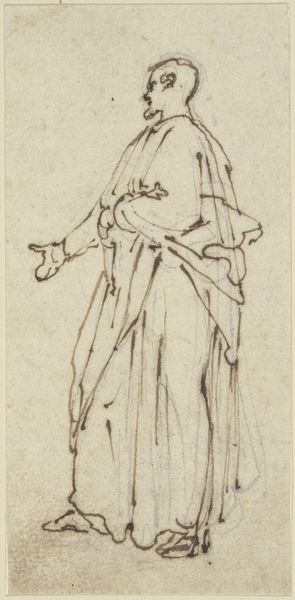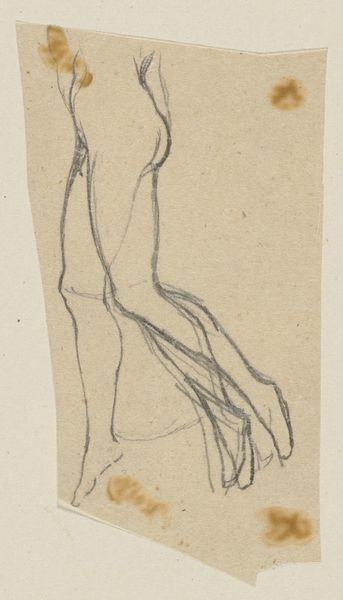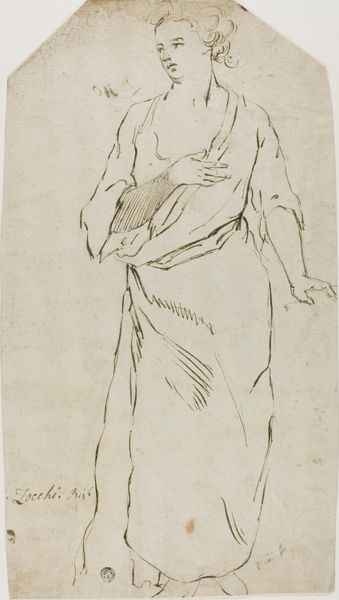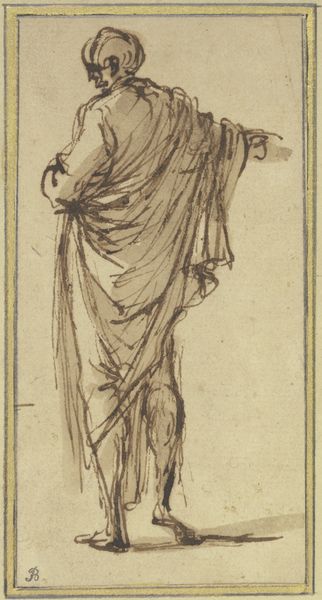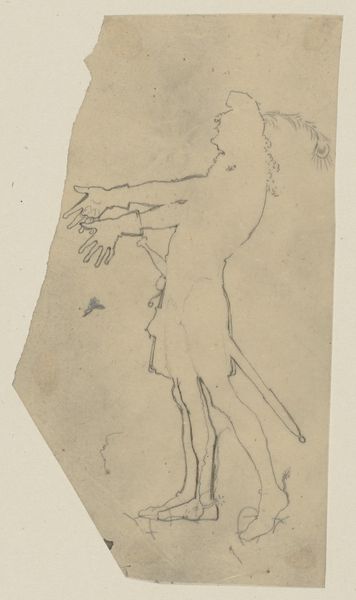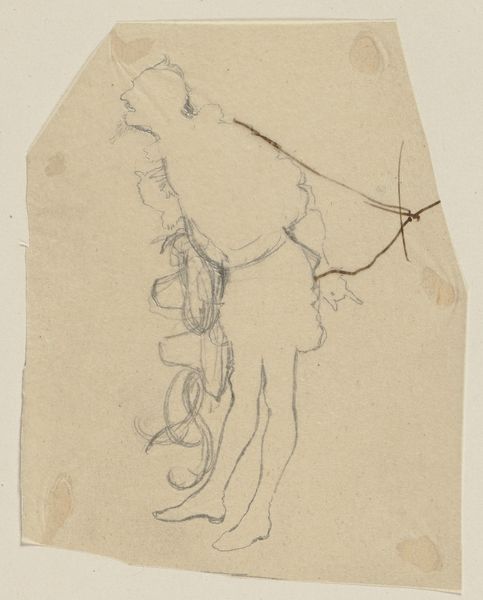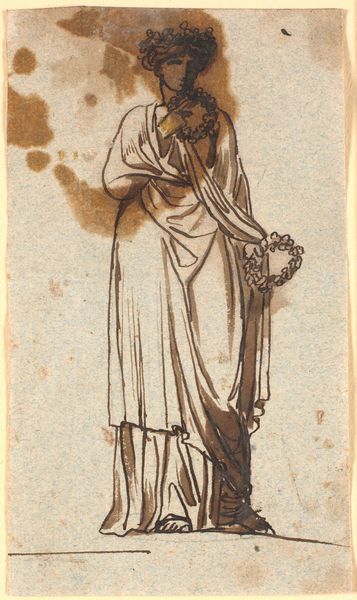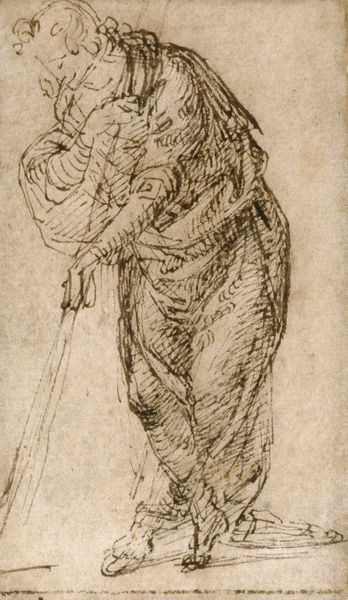
Hope: Design for the Unexecuted Monument to the First Duke of Marlborough c. 1733
0:00
0:00
drawing, paper, ink
#
drawing
#
baroque
#
figuration
#
paper
#
ink
#
history-painting
Dimensions: 90 × 54 mm
Copyright: Public Domain
Curator: Standing before us is John Michael Rysbrack's drawing, "Hope: Design for the Unexecuted Monument to the First Duke of Marlborough," created around 1733. It’s rendered in ink on paper. Editor: She seems troubled. I mean, here’s Hope, classically draped, but she’s got this "world-on-my-shoulders" vibe, right? Like she's carrying the weight of a thousand unfulfilled dreams, not exactly radiating sunny optimism. Curator: The composition indeed elicits a subdued mood. Rysbrack's deployment of line and shadow—observe the delicate hatching that models the figure’s form—infuses the allegorical figure of Hope with an introspective quality. The figure's pose, head resting on her hand, suggests pensive consideration rather than exuberant expectation. Editor: Introspection. I like that. I bet Marlborough was hoping for something monumental and glorious. Instead, he got this sketch of Hope lost in thought. Almost ironic, don't you think? You want victory trumpeted, and the artist gives you melancholy! Curator: I understand your reading. But consider the context. This was a design, an idea that, as the title suggests, never materialized. Perhaps the somber tone is less about Marlborough's specific legacy and more about the ephemeral nature of grand aspirations themselves. The unexecuted monument becomes a poignant symbol. Editor: Ouch, that's deep. Ephemeral aspirations. Makes you wonder, doesn’t it? Maybe Rysbrack wasn’t just sketching a statue; he was sketching the very human condition. Hope isn't a guarantee, it's a fragile thing we have to actively hold on to. Curator: Precisely. Furthermore, we should note the symbolic anchors in the drawing: the attribute, suggestive of both support and fragile yearning. The lack of background and setting enhances the figure’s isolated state. It forces us to concentrate on Hope herself, uncluttered with contextual trappings. Editor: True. I had come here for architectural details and political drama. Instead, it turns out, there is a delicate portrayal of longing and maybe even disillusionment. Art's sneaky that way. Curator: Yes, indeed. The dialectic between intention and outcome can unveil profound truths—the heart of Baroque era and what lies beneath it. Thank you for that, it makes me think even harder about the art. Editor: Always a pleasure. These old images continue to tell fascinating, new stories.
Comments
No comments
Be the first to comment and join the conversation on the ultimate creative platform.
